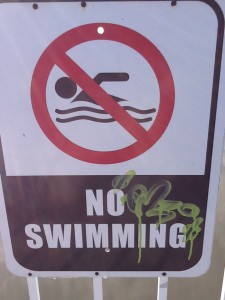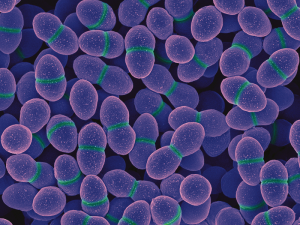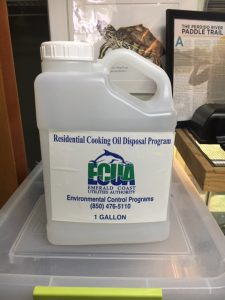For many in the Pensacola Bay area, water quality is a top concern. Excessive nutrients, heavy metals, and fecal bacteria from run-off have all been problems. In recent years fecal bacteria has become a major concern, forcing both health advisories at public swimming areas, and shellfish harvesting closures. In a report from the Florida Department of Environmental Protection last modified in 2021, 43 sites in the Pensacola Bay area were verified as impaired and 11 of those (22%) were due to high levels of fecal bacteria1.
As the name implies, these are bacteria associated with the digestive tract and find their way into waterbodies via animal waste. Animal waste can harbor pathogenic organisms and contribute to algal blooms which leads to hypoxia (low dissolved oxygen in the water), and potential fish kills. As bad as hypoxia and fish kills can be, it is the health issue from the pathogens that are often the larger concern.
In saline waters, the fecal bacterium Enterococcus is the species used for indication of animal waste. This bacterium is more tolerant of salt water than E. coli, or other fecal bacteria, and a better choice as an indicator for this reason. Enterococcus is found in the intestines for birds and mammals and enters waterways through their feces. Waterfowl, pets, and livestock can all be sources, but it is human waste that many point to when the bacteria counts are over the environmental thresholds set. Human waste enters the waterways either by septic or sewer overflows. It is the septic systems we will look at in this article.
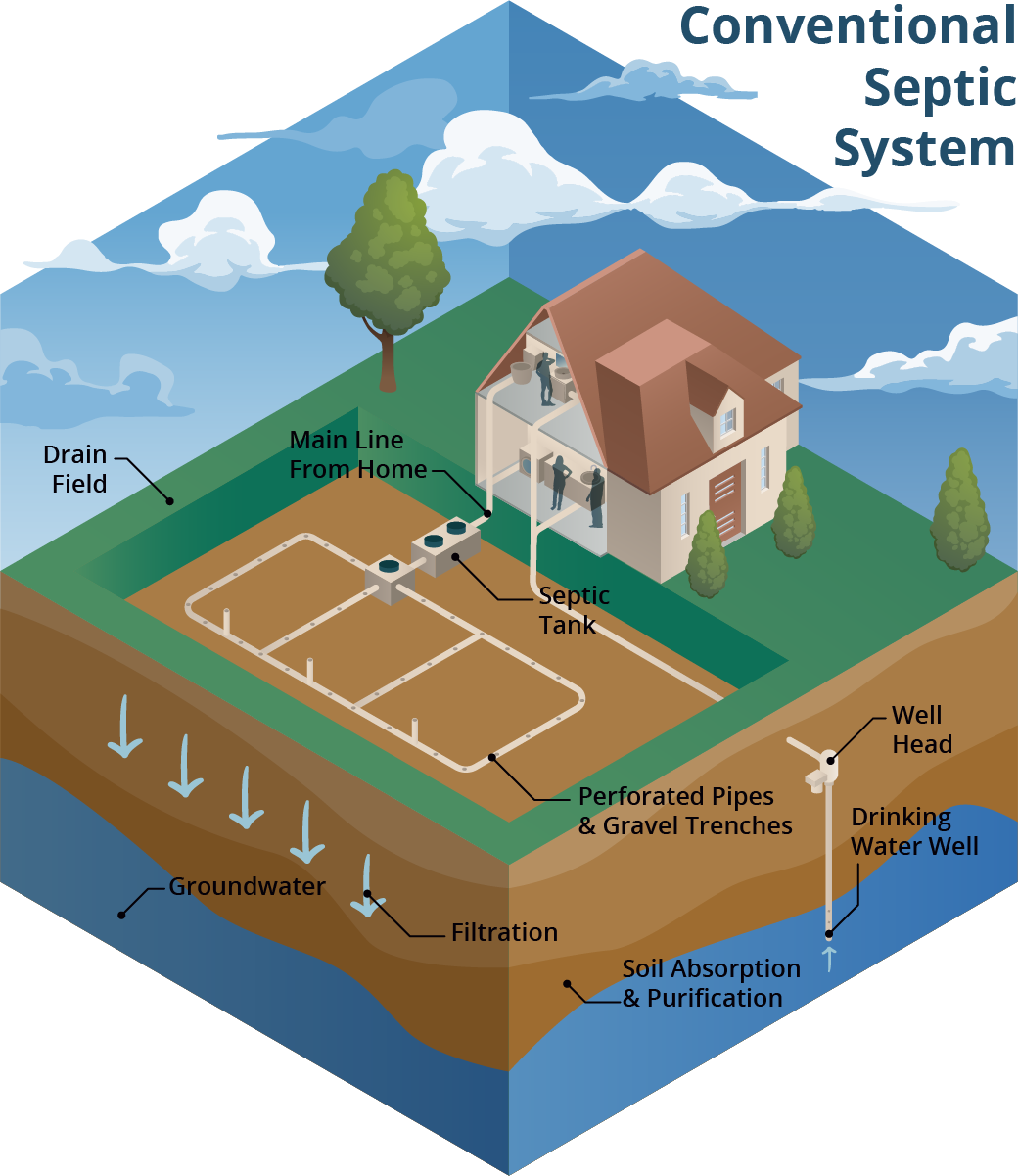
A conventional septic system is made up of a septic tank (a watertight container buried in the ground) and a drain field. Image: Soil and Water Science Lab UF/IFAS GREC.
How the septic system works…
The process of course begins when you flush. The wastewater leaves the commode and enters a pipe which leads to the septic tank outside. Here the wastewater separates. The solid waste will settle to the bottom forming a layer called sludge. Fats, oils, and grease float on water and form a top layer called scum. The untreated wastewater settles in the middle. This wastewater will drain from the septic tank into a series of smaller pipes and leach into a drain field. The drain field should be made of large grain material, like sand or gravel, that allows the filtration of the water as it dissipates into the environment. On paper this system should work well, and often does, but you can see where problems can occur.
- Was the septic system placed in the correct area? Often as a homeowner you have no control over where the tank is placed but there are regulations on this, and they should have been followed.
- Is there sufficient drain material for the effluent to effectively drain and filter (plenty of sand/gravel)?
- Is the site too close to the water table? Saturated ground will not allow for proper filtration and can create layers of untreated water to settle near the surface creating foul odors and leach into local waterways. Over the last decade the Pensacola area has seen an increase in the annual amount of rain. This increase can turn what was a suitable location into one that is no longer.
Again, many homeowners have no control over the placement of the septic but doing your due diligence when purchasing a home, you can do. Checking the situation of the septic can save you a lot of problems down the road.
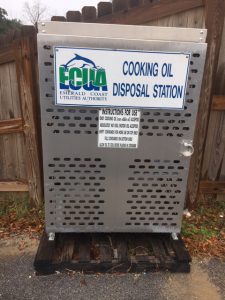
The FOG gallon containers are found in these metal cabinets placed around the county.
Photo: Rick O’Connor
- What are you flushing down the commode? Here you DO have control.
- Excessive amounts of fats, oils, and grease will increase the scum layer, and this can enter the pipes leading to the drain field causing clogging of those. Clogs can cause backups into the tank and leaks near the top as well as backups into your home. Not only can these overflows create problems in the home, but they can also end in our waterways creating water quality problems. So, what do you do with the oil and grease left over from cooking? In Escambia County, the Emerald Coast Utility authority provides what they call the FOG program2. This program provides free 1-gallon plastic jugs to place your oil and grease in. You can find these in metal cages at locations around the county, there is one at the extension office. You take it home, fill it up, and return it for a new one.
- Disposable wipes can be flushed, but they do not degrade. Excessive amounts of disposal products flushed into your septic system will certainly create clogs in the drainpipes and backups into the lawn, waterways, and your home. Do not flush these! Toss them into the trash can.
- Interestingly we are learning that milk will solidify after pouring down the drain. It forms solid chunks resembling concrete and can also create backups and overflows. This is relatively newly discovered problem. One suggestion is to pour unwanted milk on your garden, but you do not want to flush it down the drain to your septic tank.
- There has been discussion on chemical products marketed to clean your septic. Many of our experts believe that these can alter the good microbes within the tank that breakdown the solid waste layer, the sludge. This is not something you want.
- The last one is water itself. Not that you cannot flush water down the drain, but excessive amounts can create situations where either the scum or the sludge layers reach the drainpipes and form clogs. Do not use excessive amounts of water from different sources in your home at the same time. Do not overload the system.
- Driving over the septic tank or drain field.
Most understand that this can cause problems. It can compact the soil being used for the drain field, thus making it less effective at draining and filtering. It can also cause cracks in both the tank and the drainpipes, which can create leaks that allow untreated wastewater to travel away from the drain field. Be careful where you use heavy vehicle traffic on your lawn.
- Pumping out your septic system.
This is something few people do. The untreated wastewater should flow into the drain field and percolate through the sand/gravel bed. However, the scum and sludge do not drain and need to be pumped periodically. The recommended cycle for pump outs is once every 3-5 years. Again, this is something most homeowners do not do until backup problems occur. We do recommend having your system pumped on that cycle.
- Convert to a sewer system.
This is not an option for everyone, and we know for some in which it is, they are not eager to do so. But converting to a sewer takes the maintenance issue off the homeowner and onto the local utility. The conversion can be expensive but, in some communities, there are cost share programs to help with this. Check with your local utility for more information.
If placed, used, and maintained properly septic systems can last 25-30 years and not be a major problem for local waterways. Converting to a sewer system can help, but there are also problems here. We will address those in our next post.
Reference
1 Florida Department of Environmental Protection. 2021. Verified Lists for Group 4 Basins Cycle 2 – Pensacola Bay.
2 Fats, Oils, and Grease (FOG). Emerald Coast Utility Authority (ECUA).
https://ecua.fl.gov/live-green/fats-oils-grease.
- Our Environment: Part 10 – Improving Agriculture - June 20, 2025
- Marine Creatures of the Northern Gulf – Snails and Slugs - June 20, 2025
- Our Environment: Part 9 – Agriculture Challenges - June 6, 2025

